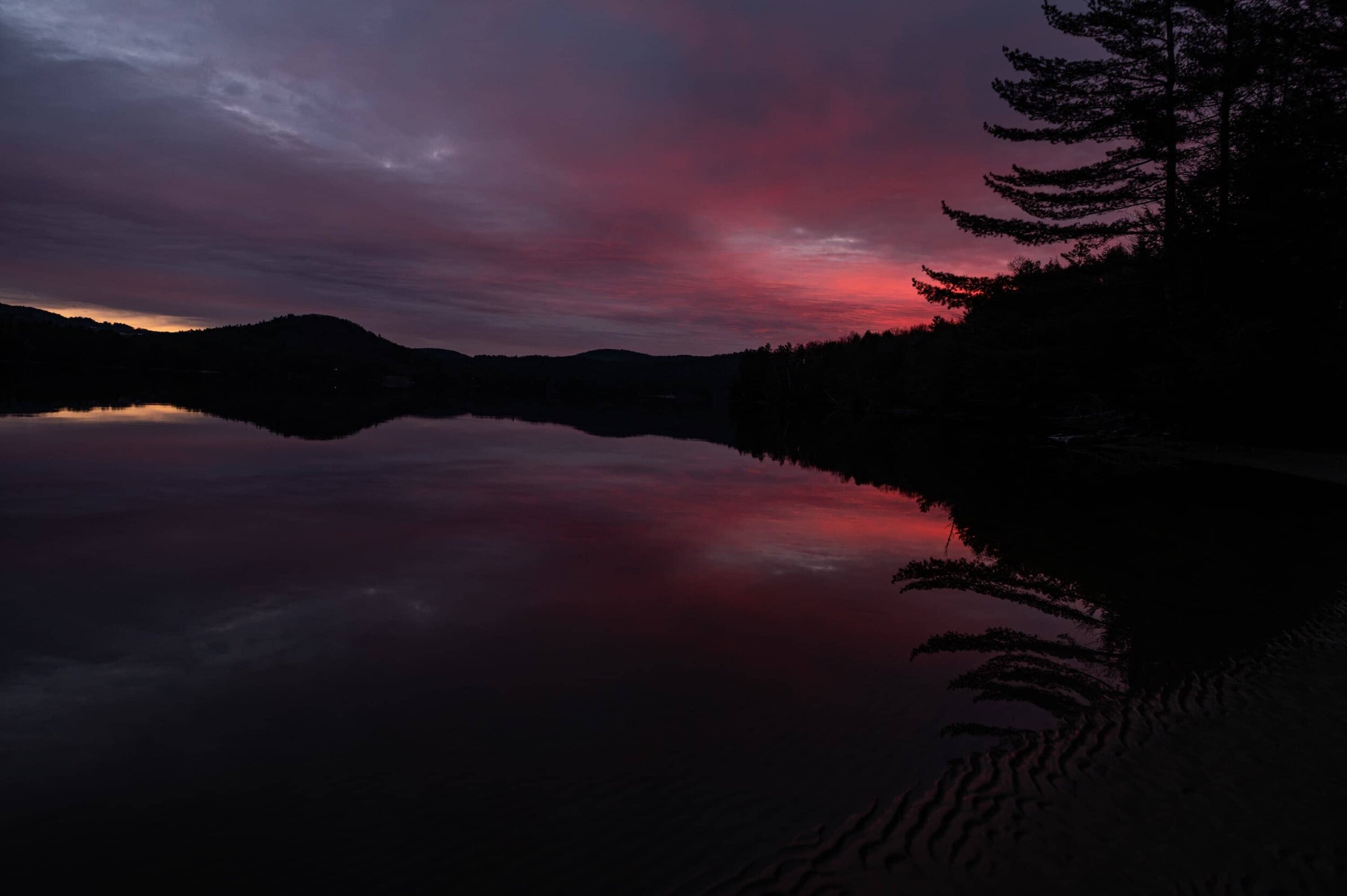Early Season Trout Fishing in New Hampshire
A beautiful 24” wild New Hampshire brown trout caught and released in April, 2020.
Photo: Joe Klementovich
This piece was originally published here on Fulling Mill’s Blog. It has been updated and adapted since.
Cold, snowy and wet, spring trout fishing in New Hampshire is nothing like the lazy days of summer where you float dry flies to rising fish on calm water. As we near the end of 2020, I took some time to reflect on my season and some of its most productive months for trophy trout: the spring.
Why is spring so productive for trophy trout in New Hampshire?
Now let’s be clear, New Hampshire is home to exceptional trout fishing for the entire open season (January 1-October 15), but certain times of year are best suited to specifically targeting big fish. The spring is one of these as trout are coming off a long, cold winter and are looking to eat meals where they can.
A beautiful sunrise after a fantastic day of spring fly fishing in New Hampshire.
Photo: Joe Klementovich
The problem.
Many anglers write off the spring entirely—and those that give it a try once or twice often find limited success. The reason for this is usually quite simple: with colder temperatures and different river conditions, the fish don’t follow the same patterns that most anglers are accustomed to. Not only that, but they neither eat the same things, nor in the same way.
As the seasons change, so do the trout’s habits.
Photo: Joe Klementovich
Adapt your game.
To solve this problem, you have to adapt your game to find the fish. This starts with rethinking where you look for fish. While you might typically find them in highly-oxygenated pocket water or riffles when the water’s warmer (55º and above), the fish aren’t there when it’s cold—especially brown trout. They’re holding in the slow-moving water that you’d skip in the summer. With low water temperatures and shorter days, they have slow metabolisms and significantly less energy. They want to move as little as possible, so there’s no reason for them to be in fast water.
Accommodate their habits.
Once you find water where you think a trout might hold in cold weather, it’s important to accommodate their eating habits as well. It’s widely discussed that trout eat nymphs the majority of the time and this is no exception in the spring. However, the nymphs you find in the spring months aren’t necessarily the same as you’ll find in the summer either. Some species aren’t as far along in their life stage, so you should adjust your fly sizes and colors to match this. It will also be important to get your nymphs down deep, as the water is frequently higher and faster than usual—especially as the snowmelt begins.
Stoneflies are one of my top producing flies in New Hampshire waters!
I also like to pair my nymphs with a high density fluorocarbon as this not only helps them sink faster, but is also stronger and more abrasion resistant. What’s more, it holds up better than monofilament when exposed to water. Trust me, when you hook into a trophy brown trout and watch it jump, you don’t want to be worried about your tippet.
Joe Klementovich and Jay Riley (New England Riverworks) celebrate a 23”+ spring brown trout.
Don’t overlook streamers.
While nymphs will perform well throughout the early fly fishing season in New Hampshire, streamers should not be overlooked. The main difference between early-season streamer fishing and what comes later, however, is that you need to slow everything down. Though there are exceptions to this, it’s rare that you’ll get a fish to move far for a meal. It’s too cold, and they don’t want to work that hard. They’d much rather wait for something to drift into their open mouth. Because of this, it’s most effective to use passive retrieves that mimic an easy meal instead of a fast strip.
A wild New Hampshire brown trout splashes after being caught on a small streamer.
Photo: Joe Klementovich
Are you ready?
Has this gotten you ask excited as I am for the spring season? I’ll be biding my time on the vise in anticipation.
Tight lines, and I hope to see you soon.






